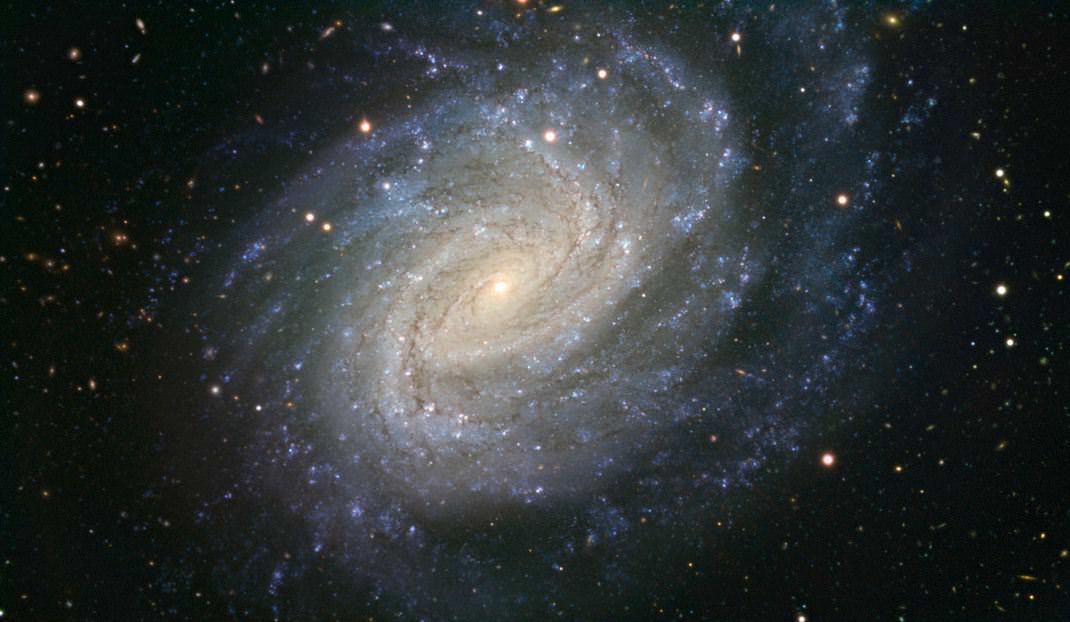This beautiful spiral galaxy looks peaceful, with its swirling white and blue arms appearing like they could be home to countless solar systems similar to ours. But NGC 1187 has hosted two supernova explosions during the last thirty years, and these violent stellar explosions are the result of the powerful death of either a massive star or a white dwarf in a binary system. Astronomers are keeping an eye on this galaxy for more outbursts.
This lovely new image of NGC 1187 was taken with ESO’s Very Large Telescope, and is the most detailed image of this galaxy. This impressive spiral lies about 60 million light-years away in the constellation of Eridanus (The River).
The galaxy is seen almost face-on, which provides a good view of its spiral structure. About half a dozen prominent spiral arms can be seen, each containing large amounts of gas and dust. The bluish feature in the spiral arms indicate the presence of young stars born out of clouds of interstellar gas.
Looking towards the central regions, we see the bulge of the galaxy glowing yellow. This part of the galaxy is mostly made up of old stars, gas and dust. In the case of NGC 1187, rather than a round bulge, there is a subtle central bar structure. Such bar features are thought to act as mechanisms that channel gas from the spiral arms to the center, enhancing star formation there.
Around the outside of the galaxy many much fainter and more distant galaxies can also be seen. Some even shine right through the disc of NGC 1187 itself. Their mostly reddish hues contrast with the pale blue star clusters of the much closer object.
In October 1982, the first supernova detected in NGC 1187 took place, SN 1982R, and more recently, in 2007, SN 2007Y made an appearance, and was initially discovered by an amateur astronomer Berto Monard in South Africa, and was monitored by other astronomers for almost a year. This new image of NGC 1187 was created from observations taken as part of this study and the supernova can be seen, long after the time of maximum brightness, near the bottom of the image.
These data were acquired using the FORS1 instrument attached to the ESO’s Very Large Telescope at the Paranal Observatory in Chile.
Lead image caption: Spiral galaxy NGC 1187 Credit: ESO
Source: ESO

